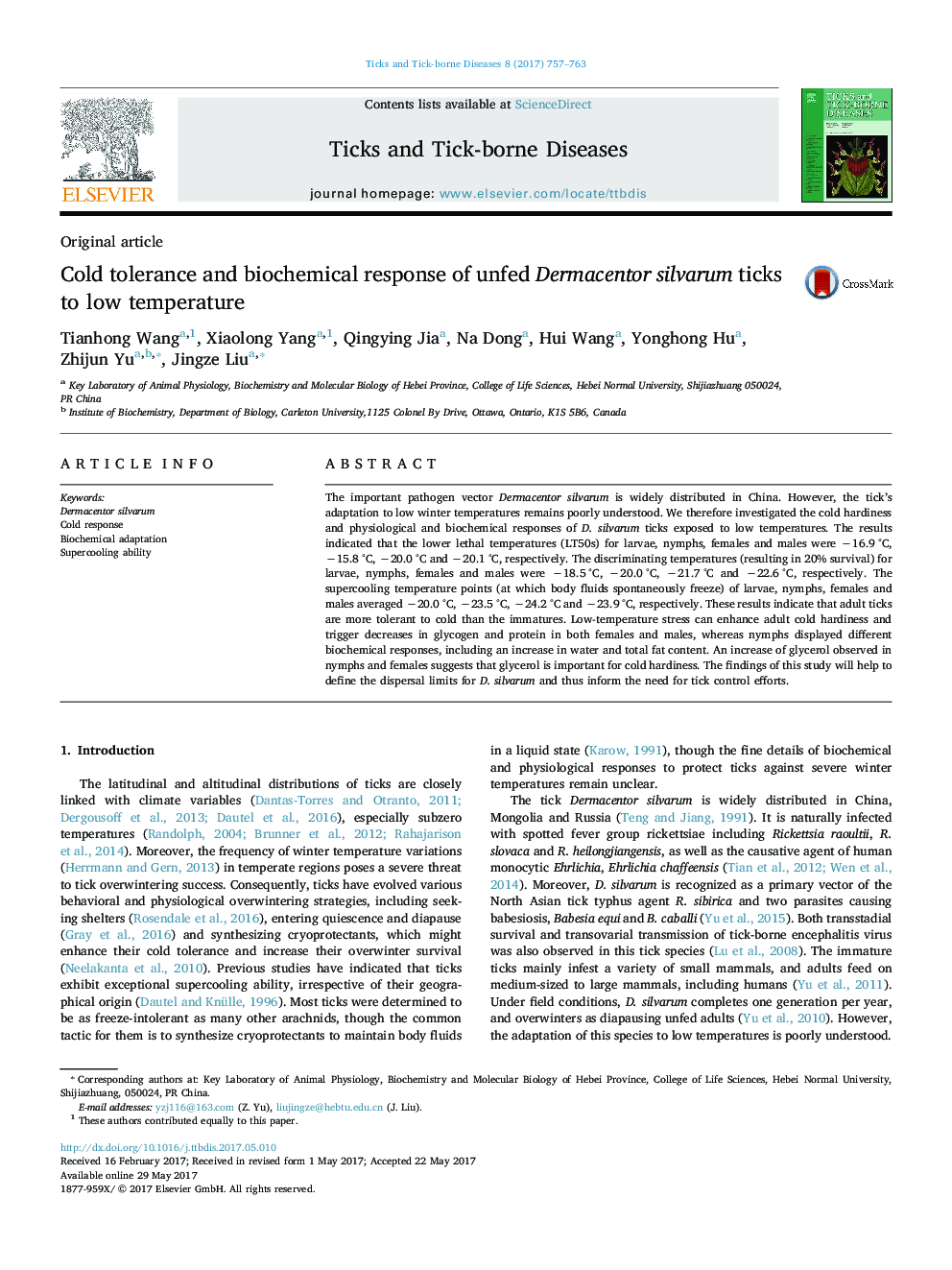| Article ID | Journal | Published Year | Pages | File Type |
|---|---|---|---|---|
| 5546335 | Ticks and Tick-borne Diseases | 2017 | 7 Pages |
The important pathogen vector Dermacentor silvarum is widely distributed in China. However, the tick's adaptation to low winter temperatures remains poorly understood. We therefore investigated the cold hardiness and physiological and biochemical responses of D. silvarum ticks exposed to low temperatures. The results indicated that the lower lethal temperatures (LT50s) for larvae, nymphs, females and males were â16.9 °C, â15.8 °C, â20.0 °C and â20.1 °C, respectively. The discriminating temperatures (resulting in 20% survival) for larvae, nymphs, females and males were â18.5 °C, â20.0 °C, â21.7 °C and â22.6 °C, respectively. The supercooling temperature points (at which body fluids spontaneously freeze) of larvae, nymphs, females and males averaged â20.0 °C, â23.5 °C, â24.2 °C and â23.9 °C, respectively. These results indicate that adult ticks are more tolerant to cold than the immatures. Low-temperature stress can enhance adult cold hardiness and trigger decreases in glycogen and protein in both females and males, whereas nymphs displayed different biochemical responses, including an increase in water and total fat content. An increase of glycerol observed in nymphs and females suggests that glycerol is important for cold hardiness. The findings of this study will help to define the dispersal limits for D. silvarum and thus inform the need for tick control efforts.
